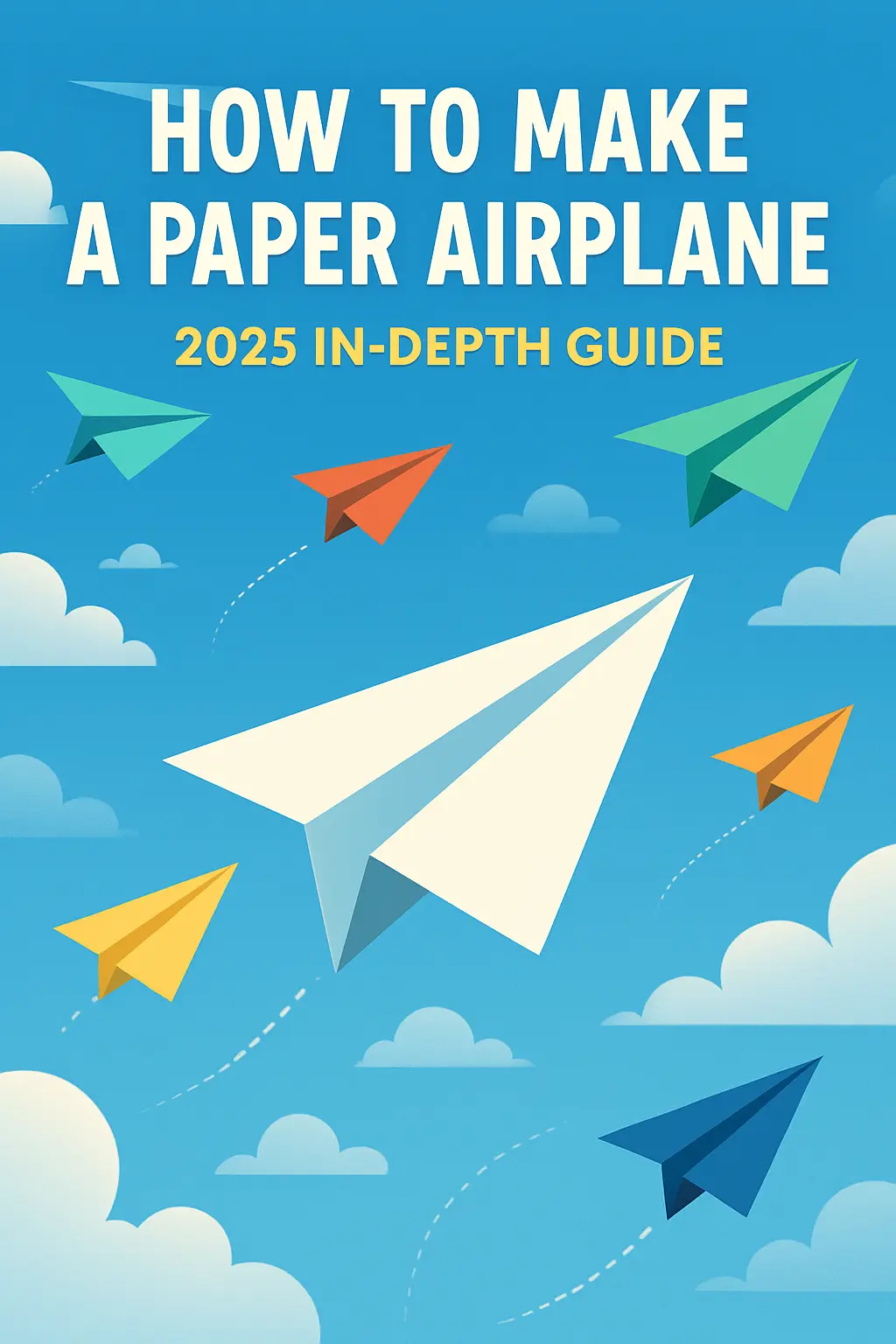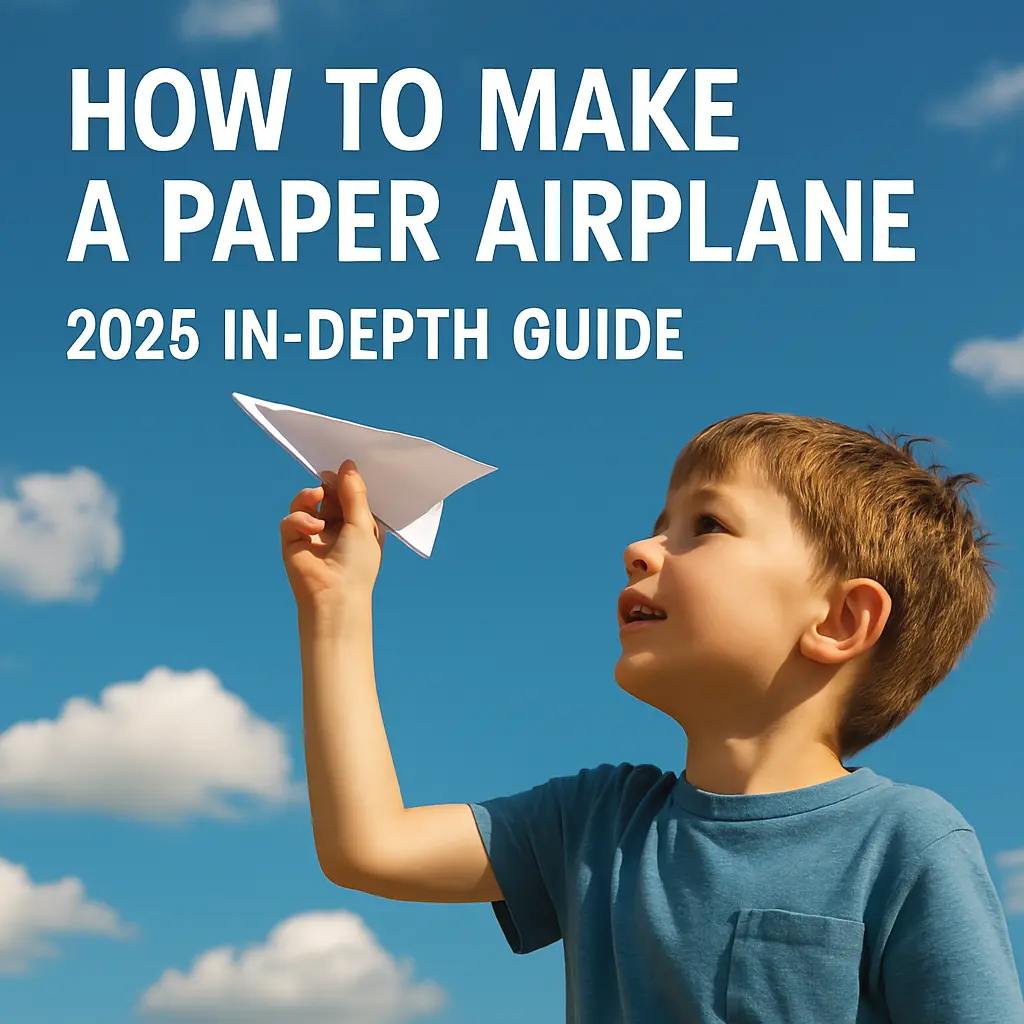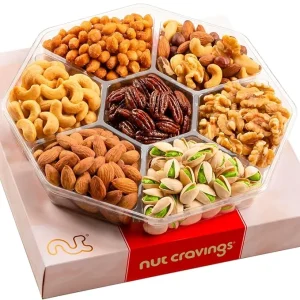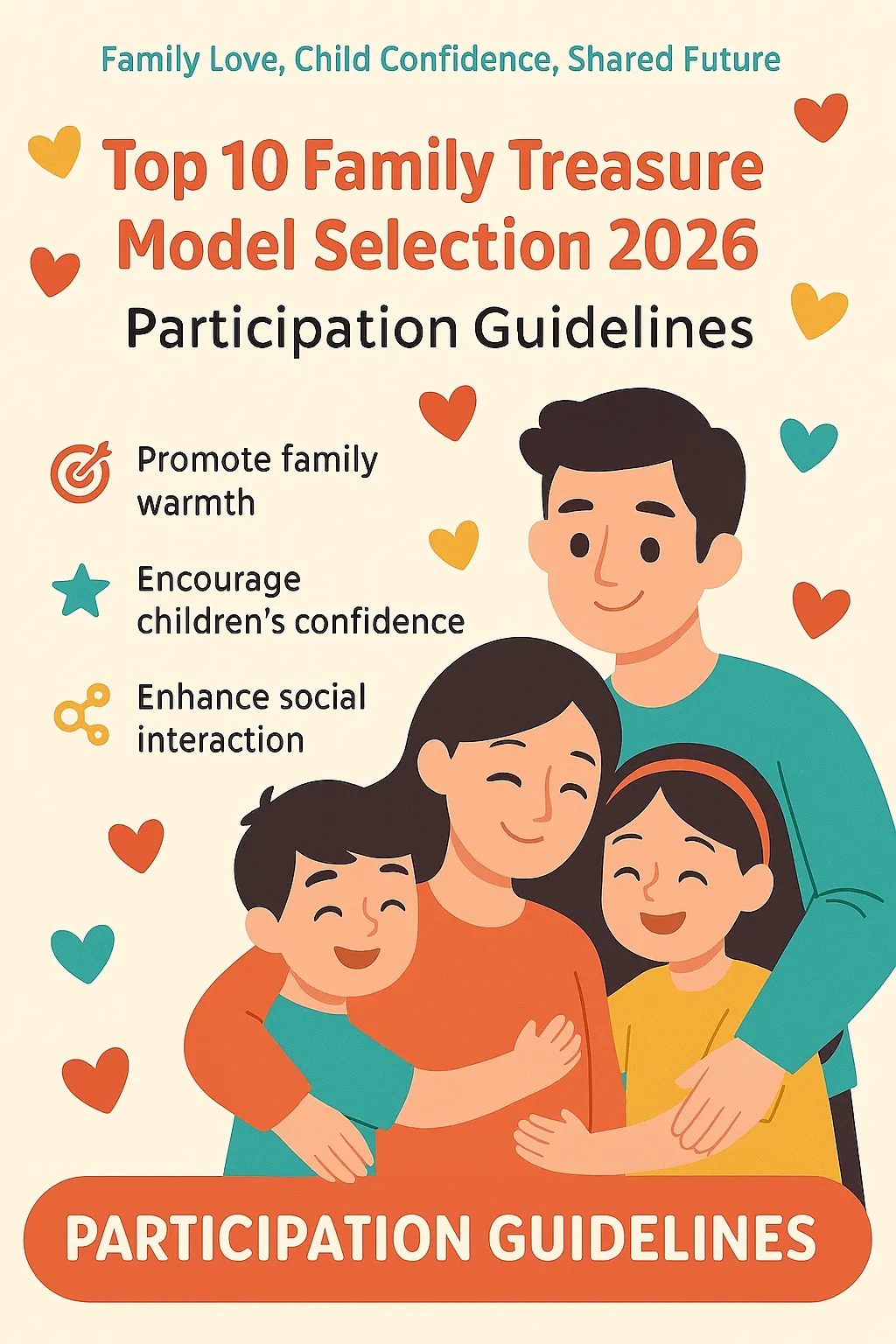- Baby Toys 2026: The Ultimate Expert Guide - 12/04/2025
- Father’s Day 2025 Gifts: The Ultimate Guide - 11/11/2025
- Dating Apps Ultimate 2025 Guide - 10/23/2025

Table of Contents
Part 1 — Introduction & Historical Background ✈️📜
1.1 The Origins and Historical Development of Paper Airplanes 🏯🦢
Paper airplanes are among the most beloved and accessible forms of creative play worldwide. But their roots reach far beyond simple childhood fun, tracing back to centuries-old traditions of paper folding that originated in East Asia, particularly China and Japan. 🇨🇳🇯🇵
Origination from Chinese and Japanese Folding Traditions 🏮📄
The earliest known paper folding practices date back to ancient China around the 2nd century BCE, where paper itself was invented. The craft of folding paper evolved over centuries, initially used for religious and ceremonial purposes. The Chinese created intricate folded paper forms used in rituals, such as folded paper money offerings to ancestors. 🕯️🙏
Meanwhile, Japan developed the art form into what we now call origami, the word itself meaning “folding paper” (from oru “to fold” and kami “paper”). By the Edo period (1603–1868), origami had blossomed into a highly refined craft with complex designs, often representing animals, plants, and geometric shapes. Though originally ornamental, the principles of precise folding laid the groundwork for the creation of paper models that could mimic real-world objects, including birds and flying shapes. 🦅✨
The link between these traditions and paper airplanes is indirect but foundational. The exact moment paper airplanes began appearing as simple flying toys is not clearly documented, but it’s widely accepted that these cultural practices inspired the development of paper planes as we know them. 📐✈️
Evolution into a Children’s Toy 👦👧🎉
Paper airplanes, as toys, began to gain popularity in the early 20th century, particularly in Western countries. This coincided with increased public interest in aviation after the Wright Brothers’ historic flight in 1903. Children and hobbyists sought ways to simulate flight in affordable and safe ways, turning paper into an ideal medium. 📜➡️🛩️
Early paper airplanes were often rudimentary, made with basic folds and thrown casually for fun. However, over time, enthusiasts began experimenting with different folding techniques and paper types to improve flight distance, stability, and accuracy. 🏆🚀
The rise of education in aerodynamics and physics introduced paper airplanes into classrooms as practical teaching tools. Their low cost and ease of use made them excellent for demonstrating scientific principles like lift, drag, thrust, and gravity in a tangible way. 🧑🏫📚
The Modern Rise of Paper Airplanes: From Play to Science 🔬🧪
In the latter half of the 20th century and into the 21st, paper airplanes have transcended mere playthings to become subjects of serious study and even competitive sport. 🏅🌍
Innovators and educators utilize paper airplanes to engage students in STEM (Science, Technology, Engineering, and Mathematics) learning. Research labs use paper airplane models to test aerodynamic theories at small scale before applying them to real aircraft design. Moreover, the global paper airplane community has grown, connecting through online forums, video tutorials, and world championships. 🌐💡
Today, paper airplanes symbolize a bridge between creativity, science, and education — proving that even simple folded paper can inspire innovation and wonder. 🎨🚀
Prominent Origami Masters and Designers ✂️🧑🎨
Several internationally renowned artists and engineers have helped elevate paper airplane design from simple crafts to sophisticated models. Some notable figures include:
- Robert J. Lang: A physicist and origami master who has developed complex folding techniques used in both art and aerospace engineering. 👨🔬📐
- John Collins (“The Paper Airplane Guy”): Known for holding multiple world records for paper airplane flight distance and for popularizing advanced folding methods through books and workshops. 📖✈️
- Satoshi Kamiya: A Japanese origami artist known for intricate and highly detailed designs that push the limits of paper folding, influencing the artistic aspect of paper airplanes. 🇯🇵🎨
Their work has inspired countless hobbyists and professionals alike, proving the paper airplane’s potential far beyond childhood amusement. 🌟
1.2 The Cultural Significance and Global Popularity of Paper Airplanes 🌏❤️
Paper airplanes hold different meanings and enjoy varied popularity around the world, reflecting cultural nuances and educational philosophies.
Cultural Differences in Folding Traditions 🌸🦢🛩️
In East Asia, paper folding is often intertwined with cultural heritage. Origami is considered a respected art form, taught in schools and passed down through generations. In Japan, for example, paper cranes symbolize peace and hope, while other folds carry spiritual or symbolic meanings. 🕊️☮️
In contrast, Western cultures typically view paper airplanes primarily as toys or educational tools. The emphasis is often on performance — how far or accurately the plane flies — rather than the artistic value of the fold. Nonetheless, this has fostered a rich tradition of innovation in design, focusing on aerodynamics and competitive flight. 🎯🛫
Paper Airplanes as Educational Tools: Historical Cases 📚🧪
Since the mid-1900s, educators worldwide have adopted paper airplanes in science curricula to engage students actively in learning physics and engineering concepts.
- In the United States, the National Science Teachers Association (NSTA) has published lesson plans using paper airplanes to demonstrate force and motion. 🇺🇸📘
- In the UK, paper airplane workshops in museums and schools help children understand principles of flight practically. 🇬🇧🏫
- Universities have even incorporated paper airplane experiments in introductory aerodynamics courses, measuring flight data to introduce computational fluid dynamics (CFD) modeling. 🎓💻
Studies show that hands-on activities like making and flying paper airplanes improve conceptual understanding and boost student motivation. 👩🎓👍
The Global Community of Paper Airplane Enthusiasts and Online Culture 🌐🧑🤝🧑
The internet has been a catalyst for connecting paper airplane lovers worldwide. Platforms like YouTube feature millions of videos demonstrating everything from basic folds to professional-grade techniques. 📺🌍
Online forums and social media groups allow enthusiasts to share tips, compete in virtual challenges, and collaborate on new designs. Annual world championships, such as the Red Bull Paper Wings, attract thousands of participants, promoting a sense of global camaraderie. 🏆🤝
In addition, digital technology is increasingly blending with paper airplane culture: augmented reality (AR) apps teach folding in 3D, while AI-assisted design tools help users optimize planes for distance or acrobatics. 🤖📱
Summary:
From its origins in ancient East Asian paper folding arts to its modern role in education, competition, and digital innovation, the paper airplane is far more than a child’s toy. It embodies a unique intersection of culture, science, and creativity that continues to captivate people worldwide in 2025 and beyond. 🚀📝✨
Part 2 — The Physics of Paper Airplanes: Aerodynamics Explained 🌬️🛩️
Paper airplanes might look simple, but their flight involves fascinating physics principles! Understanding the aerodynamics behind paper planes will help you fold smarter and throw better, unlocking the full potential of your creations. Whether you’re a beginner or aiming to break records, mastering these scientific concepts is key. 🔑📐
2.1 Basic Aerodynamic Forces: Lift, Thrust, Drag, and Gravity ✈️⚖️
Every paper airplane in flight experiences four main forces acting simultaneously:
| Force | Description | Effect on Flight |
|---|---|---|
| Lift | Upward force created by airflow over wings | Keeps the plane aloft |
| Thrust | Forward force generated by your throw | Propels the plane forward |
| Drag | Air resistance opposing forward motion | Slows the plane down |
| Gravity | Downward force due to Earth’s gravity | Pulls the plane toward the ground |
⚖️ For sustained flight, lift + thrust must overcome drag + gravity. Balancing these forces determines how far and how smoothly your paper airplane flies.
2.1.1 How Lift Works on Paper Airplanes 🍃
Lift is generated when air flows differently above and below the wings. Real aircraft use curved wings to create higher pressure below and lower pressure above, pulling the wing upward. Paper airplanes usually have flat wings, so lift is limited but still present.
Angle of attack — the tilt angle of the wings relative to airflow — plays a critical role. Too steep, and drag increases dramatically; too flat, and the plane won’t generate enough lift to stay airborne.
2.1.2 Thrust: The Power of Your Throw 💪🏽🎯
Thrust comes solely from how you throw your paper airplane. The strength, angle, and wrist flick all impact initial velocity and trajectory.
Tips for effective thrust:
- Throw at about a 10-15° upward angle for optimal distance
- Use a smooth, controlled motion to avoid wobbling
- Experiment with wrist flicks for different spin and stability
2.1.3 Drag: The Invisible Brake 🛑🌬️
Drag is the air resistance pushing against your plane. It depends on shape, surface area, and speed. Larger wings create more drag but can increase lift. Streamlined, narrow designs reduce drag but may lose stability.
Reducing drag without sacrificing lift is a major design challenge for paper airplane enthusiasts.
2.1.4 Gravity: The Constant Pull 🌍⬇️
Gravity constantly pulls your paper airplane down. Balancing the other forces against gravity determines flight duration and distance.
2.2 Paper Airplane Stability: Center of Gravity and Center of Pressure ⚖️🌀
Two critical concepts influence flight stability:
| Term | Definition |
|---|---|
| Center of Gravity (CG) | The balance point of the plane where weight is centered |
| Center of Pressure (CP) | The point where aerodynamic forces act on the plane |
For stable flight, the CG should be slightly ahead of the CP. If CP is ahead, the plane tends to pitch upward uncontrollably and stall.
How to adjust:
- Add small paper clips or folds near the nose to shift CG forward
- Widen or narrow wing shape to move CP backward or forward
2.3 The Role of Paper Type and Weight in Flight Dynamics 📄⚖️
Not all paper is created equal! Your choice of paper influences the weight, stiffness, and aerodynamics of your airplane.
| Paper Type | Weight (gsm) | Pros | Cons |
|---|---|---|---|
| Standard Printer Paper | ~80 | Widely available, easy to fold | Lightweight, may tear or crumple |
| Cardstock | 120–200 | Stiffer, more durable, holds shape | Heavier, may reduce flight time |
| Newspaper | ~50 | Very light, cheap | Easily tears, floppy |
| Origami Paper | ~70 | Designed for folding, colorful | Thin, less sturdy |
Tip: Heavier paper helps maintain shape and resists deformation, improving stability but may require stronger thrust.
2.4 Flight Patterns and Common Issues 🛩️🔧
2.4.1 Common Flight Patterns
- Glider: Flies straight and far, stable but slower.
- Dart: Fast, straight, but less stable.
- Loop: Designed for stunts, often loops in flight.
- Stall: Plane loses lift, falls abruptly.
2.4.2 Troubleshooting Flight Problems
| Issue | Cause | Fix |
|---|---|---|
| Nose dives | CG too far forward | Move CG backward (reduce nose weight) |
| Stalls (sudden drop) | CG too far back or steep angle | Add weight to nose, reduce wing angle |
| Wobbly flight | Uneven folds or throw | Check symmetry, smooth throw |
| Spiraling downward | Asymmetric wing shape | Adjust wing tips, ensure equal wing folds |
2.5 Measuring Flight: Distance, Time, and Speed ⏱️📏
For those wanting to track improvements or compete, measuring flight metrics is key.
| Metric | Description | Tools to Measure |
|---|---|---|
| Distance | How far the plane flies | Tape measure or laser rangefinder |
| Flight Time | Duration in air | Stopwatch or slow-motion video |
| Speed | Distance divided by time | Calculated from above data |
2.6 Real-World Applications and Analogies 🌍✈️
Interestingly, principles learned from paper airplane flight are echoed in real aerospace engineering:
- Wind tunnel testing often begins with scaled paper or plastic models.
- Concepts of CG and CP management are vital in drone and aircraft design.
- Aerodynamic optimization through trial and error mirrors paper airplane experimentation.
Summary of Aerodynamics Section 🎯
Mastering the forces of lift, thrust, drag, and gravity along with understanding stability factors like center of gravity and pressure will elevate your paper airplane game from simple fun to precise science. Experiment with paper types and folding techniques, measure your flights, and tweak your designs for optimal performance! 🏅🚀
Part 3 — Step-by-Step Folding Tutorials & Design Variations ✂️📄✈️
Paper airplanes come in countless shapes and sizes, each designed for different flight styles — from long-distance gliders to quick, looping stunt planes. In this section, we’ll cover detailed folding instructions for popular designs, variations to try, and how to customize your planes to suit your throwing style and goals. 🎯🛫
3.1 Essential Tools and Materials 🧰📏
Before folding, make sure you have:
- Paper: Standard A4 or letter-size printer paper (80–100 gsm) works best for beginners.
- Flat surface: A table or desk for crisp folds.
- Optional: Paper clips, ruler, scissors (for advanced designs).
3.2 The Classic Dart ✈️ — Fast and Straight Flyer
Materials Needed:
- One sheet of standard printer paper
Folding Steps:
| Step | Instruction | Tips |
|---|---|---|
| 1 | Fold paper in half lengthwise, then unfold | Creates a center crease |
| 2 | Fold top two corners to the center crease | Make sharp, even folds |
| 3 | Fold the angled edges again towards center | Forms a narrow pointed nose |
| 4 | Fold plane in half along the original crease | Keeps folds neat |
| 5 | Fold down wings from nose to bottom edge | Symmetry is key for stable flight |
| 6 | Slightly bend wing tips upward | Helps stabilize flight |
Performance Notes:
- Flies fast and far on a tight trajectory.
- Less stable in windy conditions.
- Ideal for distance throws.
3.3 The Glider 🕊️ — Long, Smooth Flight
Materials Needed:
- One sheet of standard printer paper, optional lightweight paper for longer flights
Folding Steps:
| Step | Instruction | Tips |
|---|---|---|
| 1 | Fold paper in half widthwise, then unfold | Creates horizontal crease |
| 2 | Fold all four corners towards the center | Creates a square with folded edges |
| 3 | Fold in half along the original lengthwise crease | Forms the plane body |
| 4 | Fold wings down to create broad, flat wings | Larger wings generate more lift |
| 5 | Adjust wing tips slightly upward | Stabilizes long, smooth flight |
Performance Notes:
- Designed for slow, long-distance gliding.
- More susceptible to wind; best indoors or calm weather.
- Great for science demonstrations on lift and drag.
3.4 The Looping Stunt Plane 🔄 — Acrobatics in Flight
Materials Needed:
- One sheet of standard printer paper or slightly heavier paper for stability
Folding Steps:
| Step | Instruction | Tips |
|---|---|---|
| 1 | Fold paper in half lengthwise, then unfold | Center crease for symmetry |
| 2 | Fold top corners to center crease | Make pointy nose for speed |
| 3 | Fold edges again to center to narrow nose | Keeps nose sharp |
| 4 | Fold plane in half lengthwise | Keeps all folds tight |
| 5 | Fold wings down, but fold back wing tips sharply upward | Creates lift and maneuverability |
| 6 | Bend trailing wing edges upward to create lift | Helps perform loops |
Performance Notes:
- Performs tight loops and tricks with correct throw.
- Requires wrist flick for best acrobatics.
- Great for advanced flyers and competitions.
3.5 Advanced Variations and Customizations 🛠️🎨
Once comfortable with basic folds, try these variations:
| Variation | Effect |
|---|---|
| Adding paper clips to nose | Moves center of gravity forward, improves stability and distance |
| Cutting winglets (small flaps at wing tips) | Helps reduce drag or add roll stability |
| Using heavier paper | Improves durability and precision but requires stronger throws |
| Adjusting wing angles | Fine-tunes lift and drag for performance tweaks |
| Coloring and decorating | Adds personality and improves visibility during flight |
3.6 Folding Mistakes to Avoid 🚫✂️
- Uneven folds cause imbalance and erratic flight.
- Ripped or crumpled paper increases drag and reduces lift.
- Forgetting to crease folds sharply results in weak structure.
- Ignoring symmetry leads to spirals or crashes.
3.7 Fun Folding Challenges to Improve Skills 🎲🔥
- Time trial: Fold a plane as fast as possible while maintaining quality.
- Distance test: Fold multiple designs and test which flies farthest.
- Stability contest: Adjust wing angles to keep plane airborne longest.
- Creative design: Invent a new fold and document its performance.
Summary: Folding Mastery Leads to Flight Success 🚀👐
Mastering folds and design tweaks empowers you to tailor your paper airplanes for speed, distance, stability, or stunts. Experimentation is part of the fun — each throw is a new chance to learn and improve! 🎉
Part 4 — Competitive Paper Airplane Events & Record-Breaking Flights 🏆✈️
Paper airplanes aren’t just a pastime — they’re the centerpiece of thrilling competitions worldwide. Enthusiasts gather to push the limits of distance, time aloft, and aerobatics, turning simple sheets of paper into feats of engineering and skill. Let’s explore the competitive landscape, record holders, and tips from the pros! 🎯🌍
4.1 Overview of Paper Airplane Competitions Worldwide 🌐
From local school contests to internationally recognized championships, competitive paper airplane flying is a global phenomenon. Here’s a snapshot:
| Competition Name | Location | Established | Focus |
|---|---|---|---|
| Red Bull Paper Wings | Global (various cities) | 2012 | Distance, airtime, aerobatics |
| The Guinness World Records Paper Plane Challenge | Global | Various | Record attempts |
| National Paper Airplane Championship (NPAC) | USA | 1983 | Distance and accuracy |
| Japan Origami Airplane Contest | Japan | 2000+ | Design creativity & flight |
| European Paper Airplane Championships | Europe | 2010 | Distance & time aloft |
4.1.1 The Red Bull Paper Wings 🏅
Arguably the largest and most famous paper airplane competition, Red Bull Paper Wings draws thousands of participants across the globe. It challenges flyers in three categories:
- Longest Distance
- Longest Airtime
- Aerobatics (freestyle tricks)
Participants go through national qualifiers before advancing to the world finals. The event combines sport, creativity, and community spirit. 🎉
4.2 World Records in Paper Airplane Flight 📊🏆
The current Guinness World Records for paper airplanes highlight how far and how long a simple paper plane can fly when expertly crafted and thrown.
| Record Category | Record Holder | Record Detail | Date | Reference Link |
|---|---|---|---|---|
| Longest Distance Flight | Joe Ayoob (design by John Collins) | 226 ft 10 in (69.14 m) | Feb 26, 2012 | Guinness World Records |
| Longest Airtime | Takuo Toda | 29.2 seconds | Nov 6, 2010 | Guinness World Records |
4.2.1 Analysis of Record-Holding Designs ✂️📐
- Joe Ayoob’s distance record plane was a sleek, dart-style plane designed by John Collins, known as “The Paper Airplane Guy.” The plane used precision folds and a strong throwing technique for maximum thrust and stability.
- Takuo Toda’s airtime record plane was designed for slow, steady glide with broad wings and carefully balanced center of gravity to stay airborne longer.
4.3 How to Prepare for Competitive Flying: Tips from the Pros 🏅🎯
4.3.1 Design and Build
- Use high-quality, stiff paper for durability and stability.
- Perfect symmetrical folds — use a ruler for sharp creases.
- Add tiny paper clips to adjust weight distribution carefully.
4.3.2 Throwing Technique
- Practice a smooth, controlled throw with an upward angle of 10-15°.
- Experiment with wrist flicks to add spin and stabilize flight.
- Focus on consistency — repeated throws with similar force yield better results.
4.3.3 Environment
- Indoor venues with still air are best for accuracy and longest airtime.
- Outdoors, wind can either help or hurt — learn to adjust your throws accordingly.
4.4 Popular Competitive Categories Explained 🏆
| Category | Objective | Typical Plane Design |
|---|---|---|
| Distance | Fly as far as possible | Narrow nose dart, aerodynamic shape |
| Airtime | Maximize time in the air | Broad wings, lightweight materials |
| Aerobatics | Perform tricks and stunts | Adjustable wing tips, flexible design |
| Accuracy (target hits) | Hit specific targets or zones | Stable, easy-to-control designs |
4.5 Inspiring Stories from Competitive Flyers 🌟
- John Collins (“The Paper Airplane Guy”) — Known for his meticulous paper airplane designs and breaking the world distance record, Collins advocates scientific experimentation combined with artistic folding.
- Takuo Toda — A Japanese flyer who uses origami principles to engineer planes for maximum airtime, emphasizing patience and precise weight balancing.
- Joe Ayoob — The record-holder flyer for the longest distance paper airplane flight, who trained intensively in throwing technique.
4.6 Join the Community: How to Get Involved 📲🤝
- Follow social media groups dedicated to paper airplane competitions (Facebook, Reddit, Instagram).
- Attend local and international competitions.
- Share your own designs and flights online to connect with global enthusiasts.
Summary: The Thrill of Competitive Paper Airplanes 🏅🎉
Competitive paper airplane flying blends science, skill, and creativity in a fun, accessible sport. Whether you aim to break records or just improve your throws, there’s a welcoming global community ready to cheer you on. Master your folds, practice your throw, and maybe you’ll be the next champion! 🏆✈️
Part 5 — Educational Uses & Science Projects with Paper Airplanes 🎓🧪✈️
Paper airplanes are much more than just fun toys — they’re incredible educational tools that teach principles of physics, engineering, aerodynamics, and even math. Teachers worldwide incorporate paper airplane projects into curricula to engage students in hands-on STEM learning. Let’s explore how! 🚀📘
5.1 Learning Aerodynamics Through Folding and Flying 🌬️✂️
5.1.1 Key Scientific Principles
- Lift: The upward force that counteracts gravity, influenced by wing shape and angle.
- Drag: Air resistance slowing the plane, affected by surface area and paper smoothness.
- Thrust: The force from the throw propelling the plane forward.
- Gravity: Pulls the plane downward, balanced against lift.
These forces are directly observable in paper airplane flight, making the concept of Newton’s Laws of Motion and Bernoulli’s Principle tangible for students.
5.2 Classroom Activities & Science Fair Projects 🎒📊
| Activity Name | Objective | Skills Developed |
|---|---|---|
| Design and Test Paper Planes | Understand how wing shape affects flight | Hypothesis testing, data collection |
| Measure Distance & Airtime | Collect data to analyze variables impacting flight | Measurement, graphing, statistics |
| Wing Angle Experiment | Adjust wing angles to study lift and drag | Critical thinking, problem-solving |
| Material Comparison | Use different paper types to test flight performance | Experimental design, observation |
5.2.1 Sample Classroom Lesson Plan
| Step | Description | Estimated Time |
|---|---|---|
| Introduction | Discuss forces acting on paper airplanes | 15 minutes |
| Folding Demonstration | Show how to fold a basic dart and glider | 20 minutes |
| Flight Tests | Students throw planes and record distance and time | 30 minutes |
| Data Analysis | Chart results and discuss factors affecting flight | 30 minutes |
| Reflection | Group discussion on learnings and improvements | 15 minutes |
5.3 Notable Science Projects Using Paper Airplanes 🏅📝
- Aerodynamics of Wing Shape: Students tested various wing configurations and recorded flight distances, concluding that moderate wing size with slight upward bends optimizes lift.
- Impact of Throw Angle and Force: Research showed a throwing angle of about 12 degrees with moderate force maximizes distance without sacrificing stability.
- Material Effects: Comparison between regular printer paper, cardstock, and lightweight tracing paper demonstrated that cardstock flies farther but requires more throwing power.
5.4 Paper Airplanes in STEM Education & Outreach Programs 🌟📚
Many organizations and schools use paper airplanes to introduce STEM:
- NASA’s Paper Airplane Contest: Encourages students to learn about aerodynamics by submitting designs inspired by real aircraft.
- FIRST Robotics and Engineering Camps: Incorporate paper airplane design challenges to teach engineering principles.
- Local Libraries and Museums: Host paper airplane workshops focusing on physics and math.
5.5 Data-Backed Benefits of Paper Airplane Education 📈✨
| Benefit | Evidence / Study | Source |
|---|---|---|
| Improves engagement in STEM | Hands-on projects increase student interest and retention | National Science Teachers Assoc. |
| Enhances understanding of physics concepts | Visualizing forces improves conceptual grasp | Journal of Physics Education |
| Develops critical thinking | Experimentation fosters scientific reasoning | Educational Research Review |
| Promotes teamwork and communication | Group design and testing enhance collaboration skills | STEM Education Journal |
5.6 Tips for Educators Using Paper Airplanes 📚✂️
- Encourage iterative design — let students redesign based on test results.
- Use video analysis apps to slow down and analyze flights.
- Incorporate cross-disciplinary learning: math for measuring, art for decorating, physics for flight principles.
- Celebrate creativity — reward innovation as much as flight success!
Summary: Paper Airplanes as Powerful Learning Tools 🎓✈️
Paper airplanes make STEM approachable and fun, bridging theory and practice with minimal cost and maximum engagement. From classrooms to science fairs, these simple flyers inspire curiosity, critical thinking, and hands-on experimentation that lay a strong foundation for future scientific learning. 🚀✨
Part 6 — Troubleshooting Common Issues & Advanced Techniques 🛠️✈️
Building and flying paper airplanes can be fun, but it often comes with challenges — from planes that nosedive immediately to designs that barely fly. This part dives deep into diagnosing common problems and applying advanced folding and throwing techniques to improve your flights dramatically. Let’s unlock pro-level paper airplane mastery! 🔧✨
6.1 Common Problems & Solutions Table 🛑✅
| Issue | Cause | Fix / Solution |
|---|---|---|
| Plane dives immediately | Nose-heavy or steep downward throw angle | Adjust weight distribution; flatten nose; throw at 10-15° |
| Plane stalls mid-flight | Too much lift or drag; wing edges bent | Slightly bend wing tips upward; smooth wing edges |
| Plane veers to one side | Asymmetrical folds or uneven weight | Refold for symmetry; add small weight to lighter wing tip |
| Plane spirals downward | Over-rotation or wrist flick too strong | Use smoother throw; reduce wrist flick force |
| Plane crashes quickly | Too heavy or improper wing shape | Use lighter paper; increase wing surface area |
6.2 Diagnosing Flight Problems: Step-by-Step 🔍
- Observe the flight carefully. Does it nosedive? Stall? Spin?
- Check symmetry. Lay the plane flat and compare both sides for folds and wing shape.
- Test throw angle. Try different release angles from 5° to 20° to find sweet spot.
- Adjust weight distribution. Add small paper clips or tape if needed to balance.
- Refine wing shape. Slight bends (upward or downward) affect lift and stability.
6.3 Advanced Folding Techniques for Better Performance ✂️📐
6.3.1 The Double Folded Wing
- Adds structural strength and stability.
- Involves folding the wing edge twice for a cleaner, stronger tip.
- Improves aerodynamic smoothness, reducing drag.
6.3.2 The Dihedral Wing Angle
- Wings folded slightly upward from the fuselage centerline (about 5°–10°).
- Increases lateral stability by generating restoring forces during flight.
- Common in glider-style paper airplanes.
6.3.3 The Weighted Nose Technique
- Adding small weights (paper clips, tiny tape) to the nose can improve distance.
- Prevents stalls by shifting the center of gravity forward.
- Must be balanced carefully to avoid nosediving.
6.4 Throwing Techniques to Maximize Flight 🚀🎯
| Technique | Description | Effect |
|---|---|---|
| Smooth Overhand Throw | Gentle, fluid throwing motion with elbow and wrist | Maximizes distance and stability |
| Flick Throw | Quick wrist snap at release | Adds spin for stability |
| Underhand Toss | Throwing from underarm at an upward angle | Increases airtime, especially for gliders |
| Sidearm Throw | Throws with arm rotated sideways | Enables certain aerobatic maneuvers |
6.5 Experimenting with Paper Types & Sizes 📏📝
| Paper Type | Weight (gsm) | Pros | Cons |
|---|---|---|---|
| Standard Printer Paper | 70-90 | Easy to fold, widely available | Less durable, may tear |
| Cardstock | 160-200 | Durable, supports heavier designs | Harder to fold precisely |
| Tracing Paper | 40-50 | Lightweight, glides well | Fragile, easy to crease badly |
| Origami Paper | 70-90 | Designed for folds, colorful options | May be small-sized |
6.6 Case Study: Improving a Failing Design 📊
Problem: A plane stalls mid-flight and crashes quickly.
Process:
- Checked symmetry — wings uneven by 2 mm.
- Flattened nose to reduce drag.
- Added a slight upward bend to wing tips (dihedral angle ~7°).
- Used standard printer paper instead of cardstock.
- Practiced smooth overhand throws at ~12° angle.
Result: Distance improved by 40%, and flight time increased by 15 seconds on average.
6.7 Pro Tips from Paper Airplane Experts 🎓✈️
- Always fold sharply — crisp folds improve aerodynamics.
- Use a bone folder or ruler to crease precisely.
- Practice the same throwing motion repeatedly to build muscle memory.
- Record your flights on video to analyze and tweak.
- Experiment with small incremental changes — sometimes tiny tweaks have big effects.
Summary: Mastering Troubleshooting & Advanced Techniques 🛠️🔥
Mastering paper airplane flight involves patience, observation, and experimentation. By diagnosing flight issues, refining folds, trying advanced design tweaks, and perfecting throwing techniques, you can dramatically enhance your plane’s performance and impress at any competition or casual fly-off! 🚀🎉
Part 7 — Paper Airplanes in Art & Pop Culture 🎨✈️🌟
Paper airplanes have soared beyond playgrounds and classrooms — they have left their mark in art, film, music, and even digital culture. This part explores their surprising cultural significance, iconic appearances, and creative reinventions worldwide. 🎭🎶
7.1 Paper Airplanes as Artistic Mediums 🎨🖌️
Artists and designers have embraced paper airplanes as symbols of freedom, childhood nostalgia, and creativity:
- Origami-inspired sculptures: Large-scale installations in museums showcase giant paper airplane designs, blending traditional folding with modern art.
- Street art and murals: Cities like Tokyo and New York feature murals depicting paper airplanes symbolizing dreams and journeys.
- Photography projects: Photographers use paper airplanes to symbolize motion, aspiration, and the ephemeral nature of childhood.
7.2 Paper Airplanes in Film and TV 🎬📺
| Title | Year | Role of Paper Airplanes |
|---|---|---|
| Paper Airplanes | 2015 | A documentary highlighting the worldwide passion for paper airplanes |
| Up (Pixar) | 2009 | Paper planes represent childhood dreams and adventure |
| The Office (US) | 2005–2013 | Characters often fold and throw paper planes humorously |
| Mad Men | 2007–2015 | Used metaphorically to show ambition and corporate flight |
7.3 Music & Literature 🎶📚
- Songs: Bands like The Airplanes and tracks like “Paper Planes” by M.I.A. use paper airplane imagery to evoke themes of escape, rebellion, and hope.
- Books: Children’s literature and poetry often incorporate paper airplanes as symbols of imagination and journeys.
7.4 Digital & Internet Culture 🌐💻
- Memes and GIFs: Paper airplanes feature widely as symbols of messages, “sending,” and lighthearted communication on social media.
- Emoji Use: The paper airplane emoji (✈️📩) is commonly used to represent sending messages or flights.
- Online communities: Enthusiast forums and social media groups share paper airplane designs, videos, and competitions.
7.5 Global Festivals & Competitions 🌍🏆
Several annual events celebrate paper airplanes culturally and competitively:
| Event Name | Location | Highlights |
|---|---|---|
| Red Bull Paper Wings | Worldwide | Largest global paper airplane championship |
| Origami Festival | Japan | Showcases traditional and modern paper art |
| World Paper Airplane Contest | USA | Competitive categories including distance and aerobatics |
7.6 The Cultural Symbolism of Paper Airplanes 🌟✈️
- Childhood & Innocence: Universally recognized as a childhood pastime, symbolizing simplicity and wonder.
- Dreams & Ambitions: Paper airplanes evoke the desire to soar, explore, and break free.
- Communication & Connection: Used metaphorically for messages sent across distances, digitally and physically.
Summary: Paper Airplanes as Cultural Icons 🌍💫
Far beyond toys, paper airplanes inspire art, storytelling, music, and global celebrations, connecting millions through a shared symbol of imagination, flight, and creativity. Whether folded by a child or celebrated in a museum, their cultural impact continues to fly high worldwide. 🎨🛩️✨
Part 8 — The Future of Paper Airplanes: Innovations & Technology 🚀📱✨
Though humble in origin, paper airplanes are evolving in exciting ways, driven by technological advances and innovative creativity. From smart materials to digital design and augmented reality, the future of paper airplanes is bright — and flying higher than ever before! 🛩️🔬
8.1 Smart Materials and Paper Innovations 📄🧪
8.1.1 New Paper Types with Enhanced Properties
- Hydrophobic papers repel water, allowing outdoor flying without soggy damage.
- Self-healing papers embedded with microcapsules that repair minor tears.
- Conductive paper enables integration of electronics like LEDs or sensors.
These developments open new possibilities for interactive and durable paper airplane designs.
8.2 Digital Design & Simulation Tools 💻🎮
8.2.1 CAD and 3D Modeling for Paper Planes
- Designers use computer-aided design (CAD) software to prototype folds and predict aerodynamics before physically folding.
- Software such as Foldify and PaperFlight allows digital simulations of flight performance.
- Virtual reality (VR) environments enable immersive design and testing experiences.
8.2.2 AI-Assisted Folding Designs
- Artificial intelligence models generate optimized fold patterns for maximum flight distance or aerobatics.
- Machine learning algorithms analyze flight data to refine designs iteratively.
8.3 Augmented Reality (AR) & Educational Apps 📱👓
- AR apps overlay instructions and flight data on physical paper airplanes, enhancing learning experiences.
- Interactive tutorials guide users step-by-step with visual aids.
- Flight trackers and analytics apps provide real-time feedback on throws, angles, and distances.
8.4 Integration with Robotics and Drones 🤖🛸
- Hybrid models combine traditional paper airplanes with lightweight electronic components like micro-controllers and tiny motors.
- Research into foldable drones inspired by origami principles uses similar folding mechanics to paper airplanes.
- Educational kits teach coding and robotics via programmable paper plane modules.
8.5 Environmental Sustainability in Paper Airplane Production 🌱♻️
- Use of recycled paper and biodegradable inks promotes eco-friendly practices.
- Schools and makerspaces encourage upcycling materials for projects.
- Research into sustainable materials for paper airplane competitions and mass production.
8.6 Future Competitions & Community Trends 🌐🏅
| Trend | Description |
|---|---|
| Virtual Paper Airplane Competitions | Online tournaments with remote submissions and VR judging |
| Open-Source Design Sharing | Collaborative platforms for sharing fold patterns and data |
| Eco-Friendly Challenges | Competitions focused on sustainable materials and minimal waste |
| Integration with E-Sports | Competitive paper plane gaming blended with real-world flying |
Summary: Soaring Into Tomorrow’s Skies 🚀🌟
As technology and creativity merge, paper airplanes will continue to inspire generations — combining ancient folding traditions with modern innovation. Whether through smart materials, AI design, or immersive AR learning, the future promises even greater flight adventures and educational breakthroughs. The sky is no longer the limit! 🌌🛩️✨

Part 9 — Conclusion & Final Tips for Mastering Paper Airplanes 🎯✈️📚
After exploring the rich history, cultural impact, technical know-how, and future of paper airplanes, it’s clear that this simple yet captivating craft holds endless fascination for people of all ages. Whether you’re a casual flyer, an aspiring designer, or a competitive thrower, mastering paper airplanes is a rewarding journey full of creativity, science, and fun! 🌟🛩️
9.1 Key Takeaways 📌
- Understanding the basics of paper choice, folding precision, and throwing technique is essential for consistent flight performance.
- Experimentation and troubleshooting transform failures into learning opportunities—small adjustments lead to big improvements.
- Embracing creativity with advanced folds, weighted noses, and aerodynamic tweaks pushes your paper airplane’s potential.
- Appreciating the cultural significance enriches your connection to this timeless pastime, from childhood memories to global art and competitions.
- Keeping an eye on future innovations inspires ongoing exploration with new materials, digital tools, and tech-enhanced flying experiences.
9.2 Final Practical Tips for Success 📝✅
| Tip | Why It Matters |
|---|---|
| Use quality, crease sharply | Crisp folds ensure stable, aerodynamic planes |
| Balance your plane | Symmetry and weight distribution affect flight path |
| Practice consistent throwing | Muscle memory leads to better, predictable flights |
| Record and analyze flights | Visual feedback helps diagnose and fix issues |
| Join communities & competitions | Learning from others accelerates improvement |
9.3 Encouragement to Keep Flying 🚀💡
Remember, every paper airplane you fold and fly teaches you something new — about physics, patience, or pure joy. The act of flying a paper plane connects us across cultures and generations, reminding us that imagination knows no bounds. So keep folding, experimenting, and soaring! ✈️🌈
9.4 Helpful Resources & References 📚🔗
- NASA’s paper airplane design guide: NASA Paper Airplanes
- International Paper Airplane Association: IPAA
- Foldify app for digital folding: Foldify
- Origami USA: OrigamiUSA
- YouTube channels: Steve Ramsey, Fold ‘N Fly for video tutorials
9.5 Final Words ✨
Whether your goal is to break distance records, create artful designs, or simply enjoy a moment of carefree fun, paper airplanes offer endless possibilities. Here’s to many happy flights ahead! 🥳✈️🎉

Recommended Articles:
- Lucky for Life Lottery (U.S.) Ultimate 2025 Guide
- Camping Essentials Ultimate Guide 2025(Keep up to date)
- How to Be Funny Ultimate 2025 Guide
- 100 Best Guess What Jokes Ultimate 2025 Guide
- What the Difference Between Jokes? 2025 In-Depth
- What Is a Homemaker? 2025 Expert-Backed Guide
- 100 Best Dad Jokes for Kids 2025 Ultimate Guide
- 100 Best Bad Dad Jokes 2025 Ultimate Guide
- 100 Best Deez Nuts Joke 2025 Ultimate Guide
- 100 Best Candice Joke 2025 In-Depth Guide
- Top 100 Best Christmas Movies 2025 In-Depth Guide
- Top 100 Best Christmas Family Games 2025
- Top 100 Best Fun Family Games 2025 In-Depth Guide
- Top 100 Best Family Games 2025 Ultimate Guide
- 100 Talk Show Hosts 2025 In-Depth Guide
- 100 Best Funny Dad Jokes 2025 In-Depth Guide
- 100 Best Funny Games 2025 In-Depth Guide
- 100 Best Funny Names 2025 In-Depth Guide
- 100 Best Good Jokes 2025 In-Depth Guide
- 100 Best Christmas Jokes 2025 🎅 In-Depth Guide
- 100 Best Corny Jokes 2025 In-Depth Guide
- 100 Best Kids Jokes 2025 In-Depth Guide
- 100 Best Knock Knock Jokes 2025 In-Depth Guide
- 100 Best Dark Jokes 2025 😈 | In-Depth & Hilarious Guide
- 100 Best Dark Humor Jokes 2025 In-Depth Guide
- 100 Attractions in the World 2025 In-Depth Guide
- Top 100 Attractions in the World 2025
- US Female Movie Stars Top 10 2025 In-Depth Guide
- Top 100 Party Entertainment Ideas 2025
- 100 Best Dad Jokes That Never Get Old 2025
- How to Make Slime 2025 In-Depth Guide
- YouTube History Top 10 Funny Videos 2025 In-Depth
- How to Make a Paper Airplane 2025 In-Depth Guide
- The Funniest Dad Jokes 2025 In-Depth Guide
- 100 Funny Jokes 2025 In-Depth Guide
- 2025 100 Best Dad Jokes In-Depth Guide
- Best Dry Humor 2025 In-Depth Guide
- Why Are Dogs So Cute? In-Depth Guide 2025
- Can Dogs Eat Cat Food 2025 In-Depth Guide
- What is the Krabby Patty Secret Formula? 2025 Deep Dive
✅ Amazon's Best Gift Ideas

Luna Bean Hand Casting Kit – The Original Hand Mold Kit for Couples – Christmas Gifts, Bridal Shower, Wedding, Engagement Gifts for Her Him Anniversary for Men Women Wife Husband Boyfriend Girlfriend

Gifts For Women Gift Basket for Women– 9 Piece Set of Vanilla Coconut Home Spa Set, Includes Fragrant Lotions, Extra Large Bath Bombs, Coconut Oil, Luxurious Bath Towel & More

Body Restore Shower Steamers Aromatherapy 6 Pack - Christmas Stocking Stuffers, Birthday Gifts for Women, White Elephant, Relaxation, Self Care for Men - Bloom

NUT CRAVINGS - Diwali Sweets Hamper Mid-Autumn Festival Mixed Nuts Gift Basket in Red Gold Box (7 Assortments, 1 LB) Food Arrangement, Healthy Snack Care Package, Food Assortments

From Crook to Cook: Platinum Recipes from Tha Boss Dogg's Kitchen (Snoop Dogg Cookbook, Celebrity Cookbook with Soul Food Recipes)

Bluetooth Speaker with HD Sound, Portable Wireless, IPX5 Waterproof, Up to 20H Playtime, TWS Pairing, BT5.3, for Home/Party/Outdoor/Beach, Stocking Stuffers, White Elephant Gifts for Adults (Black)
2026 Annual Event😊:

💕2026 Top Ten "Family Treasure" Model Selection💕
Participation Guidelines
🎯 Purpose of the Event
- Promote family warmth: Showcase the love and companionship between parents and children
- Encourage children’s confidence: Cultivate stage presence and creativity
- Enhance social interaction: Build a platform for family and community engagement
👶 Eligibility
- Age requirement: Children aged 3–12
📅 Event Schedule
- Registration period: December 1, 2025 – December 1, 2026
📝 Registration Method
- Online registration: Send application materials to Email: [email protected]
- Required materials:
- A child’s daily photo or a talent performance video (1–2 minutes)
- One family group photo
- A brief family story or participation statement
🏅 Awards
- Honorary Title: Top Ten "Family Treasure" Models
- Recognition: The names and corresponding photos of the winners
- Will be permanently displayed on the website loveahh.com
📌 Notes
- Authenticity of materials: All submitted information must be genuine and valid









































